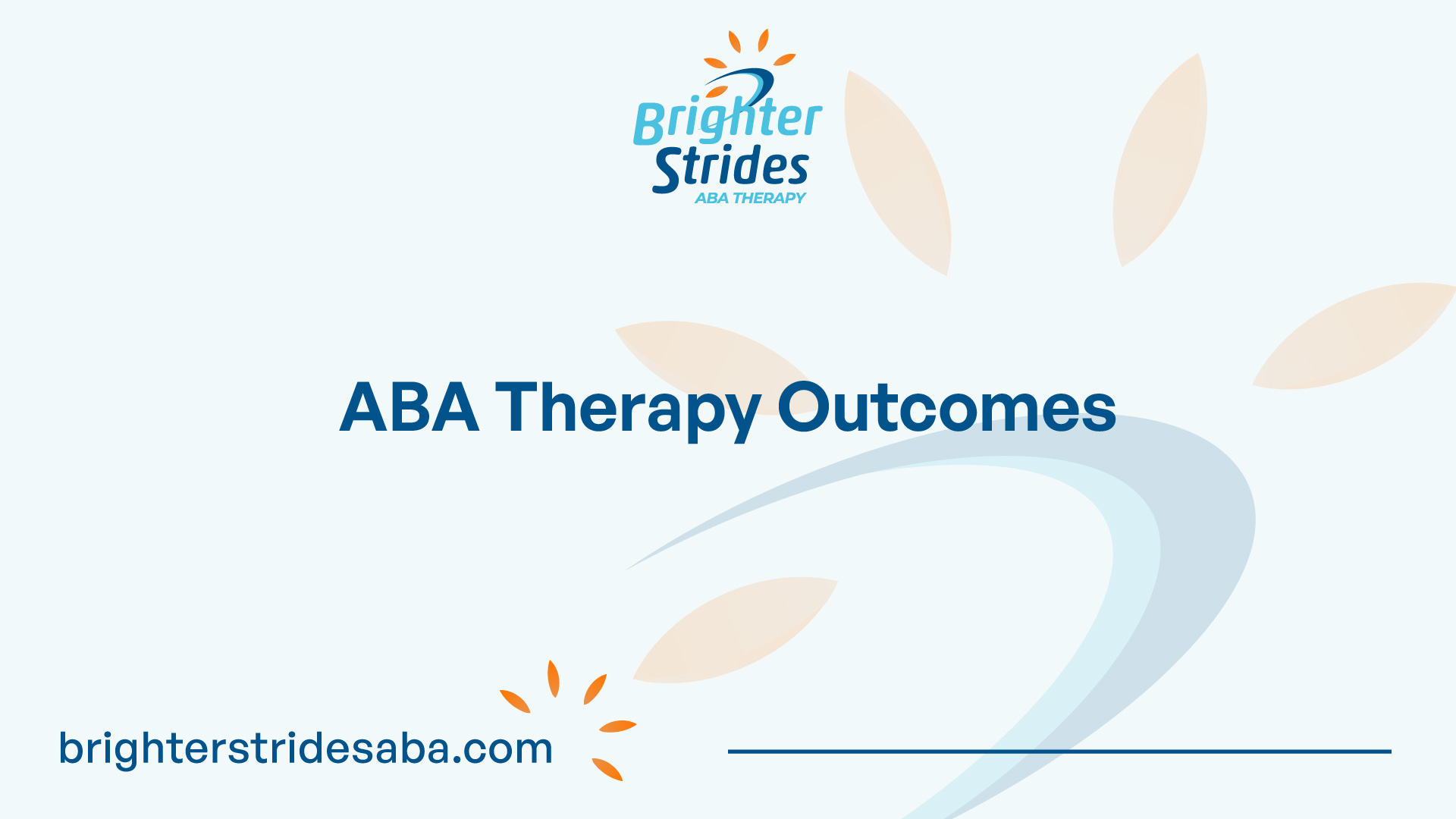
Understanding ABA Therapy
ABA therapy (Applied Behavior Analysis) is a scientifically validated approach to understanding and modifying behavior. It is widely recognized as an effective intervention for individuals diagnosed with autism spectrum disorder (ASD). ABA therapy focuses on teaching and reinforcing adaptive behaviors while reducing challenging behaviors. Let’s explore the basics of ABA therapy and its effectiveness in more detail.
Basics of ABA Therapy
ABA therapy involves the systematic application of principles derived from the science of behavior to improve socially significant behaviors. It utilizes evidence-based techniques and strategies to teach individuals new skills and reduce problematic behaviors. ABA therapists design and implement individualized behavior support plans (aba behavior support plans) to target specific goals and objectives.
The therapy employs various techniques such as positive reinforcement, prompting, shaping, and chaining to teach new skills [1]. ABA therapists closely analyze behavior and use data-driven approaches to track progress and make necessary adjustments to the intervention.
Effectiveness of ABA
Research has consistently shown the effectiveness of ABA therapy in improving behaviors and enhancing the quality of life for individuals with ASD. A study published in Nature Portfolio indicated that treatment intensity and duration were significant predictors of learning outcomes across various domains. The study found that academic and language domains showed the strongest response to ABA therapy, with substantial effect sizes.
In a landmark study conducted by O. Ivar Lovass Ph.D in 1987, it was reported that 90% of children showed substantial improvements following intensive ABA therapy. Additionally, 47% of the treated children progressed to the point of being indistinguishable from their peers. Another study published in 2005 demonstrated rapid improvements in learning and successful integration into regular education classrooms for 48% of children who received ABA therapy [3].
The Surgeon General of the United States has also acknowledged the efficacy of applied behavioral methods in reducing inappropriate behavior and increasing communication, learning, and appropriate social behavior. Furthermore, multiple organizations, including Autism Speaks and The Association for Behavior Analysis International, endorse ABA therapy as an evidence-based practice for individuals with ASD [4].
These findings highlight the effectiveness of ABA therapy in improving adaptive behaviors, language development, intellectual functioning, and daily living skills for individuals with ASD. The comprehensive and long-term nature of ABA-based interventions has been found to have medium to large effects on these outcomes.
Understanding the basics and effectiveness of ABA therapy provides valuable insights into the potential benefits it can offer to individuals with ASD. In the subsequent sections, we will explore the factors impacting ABA therapy success, the therapy’s outcomes, long-term effects, controversies surrounding it, and industry insights.
Factors Impacting ABA Success
The effectiveness of Applied Behavior Analysis (ABA) therapy can be influenced by various factors. In this section, we will explore two key factors that impact the success of ABA therapy: treatment intensity and duration, as well as referral and initiation rates.
Treatment Intensity and Duration
Research suggests that both treatment intensity and duration play significant roles in the outcomes of ABA therapy. Treatment intensity refers to the amount of therapy received, while duration refers to the length of time the therapy is provided.
A study published in Nature Portfolio found that treatment intensity and duration were both significant predictors of mastered learning objectives across different treatment domains. The study showed that higher treatment intensity and longer treatment duration were associated with greater improvements in academic and language skills.
Referral and Initiation Rates
The referral and initiation rates of ABA therapy also impact its success. A study published on the NCBI found that approximately 13% of the sample never received ABA therapy after referral. Among those referred for ABA, 66% initiated therapy and remained in services for 12 months, while less than half (46%) continued for 24 months.
The study also revealed that children with a history of special education were more likely to stay in ABA therapy for a longer duration. Having a single parent, on the other hand, was associated with discontinuation of ABA therapy. This highlights the importance of considering family dynamics and support in ABA therapy continuation.
To ensure the best outcomes, it is essential to address barriers that may hinder referral and initiation rates. Improving access to ABA therapy and providing support for families can help increase the likelihood of initiating and continuing therapy.
By understanding and addressing these factors, ABA therapy can be optimized to achieve the best possible results. It is crucial to consider treatment intensity and duration, as well as referral and initiation rates when designing and implementing ABA therapy programs. This comprehensive approach ensures that individuals receiving ABA therapy can experience the full benefits of this evidence-based intervention.

ABA Therapy Outcomes
ABA therapy has demonstrated positive outcomes in improving various aspects of adaptive behavior in individuals with autism spectrum disorder (ASD). Let’s explore two key outcomes of ABA therapy: adaptive behavior gains and adaptive level improvement.
Adaptive Behavior Gains
Research shows that children with the lowest baseline adaptive level made clinically and statistically significant adaptive behavior gains after receiving ABA therapy for 24 months. Despite low rates of full ABA dosing and high service discontinuation over time, these children experienced meaningful progress in their adaptive behavior.
The Adaptive Behavior Composite (ABC) is often used to measure the effectiveness of ABA therapy. Children with the lowest adaptive level at baseline were more likely to achieve a minimal clinically important difference (MCID) on the ABC at both 12 and 24 months of treatment. Each additional 12 months of ABA therapy was associated with a modest but significant increase of 4.46 points in the ABC score.
These findings highlight the potential for significant adaptive behavior gains in children with ASD who receive ABA therapy. It is important to note that individual progress may vary, and the effectiveness of ABA therapy depends on factors such as treatment intensity, duration, and individual responsiveness.
Adaptive Level Improvement
Long-term, comprehensive ABA-based interventions have been shown to have beneficial effects on the lifelong development of individuals with ASD. ABA therapy has been associated with positive effects on intellectual functioning, language development, acquisition of daily living skills, and social functioning.
Children who receive ABA therapy often experience improvements in adaptive skills, which are essential for independent functioning and daily life activities. These skills may include self-care, communication, social interaction, and problem-solving. Through targeted interventions and skill training, ABA therapy aims to enhance an individual’s adaptive level and promote their overall development.
The positive effects of ABA therapy on adaptive level improvement vary depending on individual factors, treatment intensity, and the duration of therapy. It is crucial to work with qualified professionals in designing and implementing a personalized ABA program to maximize the potential benefits.
Understanding the outcomes of ABA therapy, such as adaptive behavior gains and adaptive level improvement, provides valuable insights into the effectiveness and potential benefits of this intervention for individuals with ASD.
Long-Term Effects of ABA
When it comes to the long-term effects of ABA therapy, research has shown that it can have significant benefits for individuals with autism spectrum disorder (ASD). ABA-based interventions have been found to positively impact lifelong development, with notable improvements in intellectual functioning, language development, acquisition of daily living skills, and social functioning.
Lifelong Development Benefits
Comprehensive ABA-based interventions have demonstrated medium to large effects on the lifelong development of children with ASD. These interventions have been shown to contribute to improvements in various areas, including:
- Intellectual functioning: ABA-based interventions have been found to positively impact cognitive abilities, leading to improvements in problem-solving, reasoning, and critical thinking skills.
- Language development: A significant focus of ABA therapy is on improving communication skills. Studies have shown that ABA-based interventions can lead to meaningful advancements in expressive and receptive language abilities.
- Acquisition of daily living skills: ABA therapy aims to enhance individuals’ independence and functional abilities. Through skill training and behavior support plans, individuals with ASD can develop essential life skills such as personal hygiene, self-care, and household tasks.
- Social functioning: ABA interventions target social skills, helping individuals with ASD develop meaningful and appropriate social interactions. These interventions focus on enhancing social communication, building friendships, and understanding social cues.
It’s important to note that the effectiveness of ABA-based interventions may vary depending on individual factors and treatment intensity. However, the overall body of research supports the long-term benefits of ABA therapy for individuals with ASD.
Positive Effects on Functioning
Studies have consistently demonstrated the effectiveness of procedures based on behavior analytic principles for individuals diagnosed with ASD. ABA therapy encompasses various evidence-based practices, including shaping, discrete trial teaching, pivotal response training, and more. These interventions have shown positive effects on multiple aspects of functioning, including:
- Socialization: ABA-based interventions have been found to improve socialization skills in individuals with ASD. These interventions focus on fostering social interactions, building social relationships, and enhancing social awareness.
- Communication: ABA therapy targets communication skills, helping individuals with ASD improve their ability to express themselves and understand others. Through structured teaching methods, individuals can develop functional communication skills.
- Expressive language: ABA-based interventions have been shown to have a significant impact on expressive language abilities. These interventions aim to enhance individuals’ ability to effectively communicate their thoughts, needs, and desires.
While ABA therapy has been found to be effective in improving socialization, communication, and expressive language skills, it may have varying effects on other areas such as general symptoms of ASD, adaptive behavior, and cognition. The individualized nature of ABA therapy allows for tailored interventions to address specific needs and goals.
Overall, the long-term effects of ABA therapy on individuals with ASD are promising. ABA-based interventions have been recognized as evidence-based practices, endorsed by reputable organizations, and have shown significant benefits in lifelong development and functional outcomes.

Controversies Surrounding ABA
While Applied Behavior Analysis (ABA) therapy has proven to be effective for many individuals with Autism Spectrum Disorder (ASD), there are criticisms and concerns surrounding its use. It’s important to explore these perspectives to have a well-rounded understanding of ABA therapy.
Criticisms and Concerns
One of the main criticisms of ABA-based interventions stems from historical events within the field of behavior analysis. Concerns have been expressed by autism rights and neurodiversity activists regarding ABA-based interventions. Some activists use terms like “anti-ABA,” “ABA reform,” “dismantle and rebuild ABA,” and “all ABA is abuse” to voice their discontent.
Specific concerns include the use of punishment-based procedures, such as the historical use of electric shock by Ivar Lovaas. However, it’s essential to note that modern ABA practices have evolved to include more non-aversive alternatives to traditionally aversive procedures [4].
Another concern raised is the intensity of ABA-based interventions. Some individuals express that 40 hours a week may be too much. However, research indicates that more hours of ABA-based intervention at an early age are correlated with improvements in various measures for individuals diagnosed with ASD [4].
It is worth noting that there are critical voices within the autism community who argue that ABA has never been shown to be efficacious for the nonverbal autism population, and that ABA therapists may lack sufficient training in autism, brain function, or child development. These critics argue that the largest study ever conducted on autism found that any positive changes observed with ABA were small and may not be clinically significant, with the majority of those receiving services experiencing no change or even worsening symptoms over time.
Opponents of ABA therapy also highlight concerns about the psychological harm that may arise due to the lack of recognition and treatment of depression. ABA therapists may unknowingly cause harm by continuing treatments like extinction, which can lead to depressive symptoms [7].
It is important to acknowledge and address these criticisms and concerns to ensure that ABA therapy evolves and continues to provide the best possible care for individuals with ASD. Open dialogue and ongoing research are crucial in shaping the future of ABA therapy.
Opposition and Misconceptions
Critics of ABA therapy have voiced opposition to its approaches and techniques. Autistic individuals and advocates have expressed concerns about the pressure to mask or “camouflage” autistic traits, which can contribute to increased suicide risk. It is crucial to recognize the lived experiences and perspectives of autistic individuals and to listen to their voices to better understand potential harms associated with ABA therapy.
Engaging in constructive conversations and incorporating diverse perspectives can help address these oppositions and misconceptions. By listening to the concerns of autistic individuals and their advocates, professionals in the field of ABA therapy can work towards improving practices and ensuring that the therapy is ethical, respectful, and beneficial for all individuals involved.
ABA Industry Insights
The field of Applied Behavior Analysis (ABA) has experienced significant growth and evolution, expanding beyond autism-related services to various areas such as education, behavioral medicine, organizational behavior management, child welfare, behavioral gerontology, and sports and fitness. The effectiveness of ABA practices in addressing specific problems with human behavior has contributed to the industry’s growth and development.
Growth and Evolution
As of January 7, 2020, there were approximately 37,859 Board Certified Behavior Analysts (BCBAs), 4,044 Board Certified Assistant Behavior Analysts (BCaBAs), and 70,361 Registered Behavior Technicians (RBTs) [9]. The industry has experienced significant growth over the years, with a substantial increase in the number of professionals becoming RBTs between 2014 and 2018.
The demand for ABA professionals has also shown consistent growth. The annual national employment demand for BCBAs, BCaBAs, and doctoral-level BCBAs increased every year between 2010 and 2018. BCBAs and BCBA-Ds experienced an overall increase of 1,942%, while BCaBAs saw an increase of 1,098% during this period.
Accreditation and Regulations
The ABA industry places a strong emphasis on accreditation and regulations to ensure quality services and professional standards. As of March 19, 2020, there were 691 verified course sequences in 47 countries offering coursework for aspiring professionals to meet eligibility requirements for BCaBA or BCBA certification exams. In the United States, all 50 states require insurance coverage of ABA services for autism treatment by state-regulated health plans. Additionally, over 30 states have enacted licensure to regulate the ABA profession, providing further guidelines and standards for practitioners [9].
The Behavior Health Center of Excellence (BHCOE) plays a significant role in accrediting ABA organizations. They have established standards and guidelines for effective applied behavior analysis organizations. The accreditation process assesses various aspects of an organization, including staff qualification, training, treatment programs, ethics, patient and employee satisfaction, and more. Accreditation from BHCOE signifies adherence to high-quality standards in the delivery of behavior analysis services.
These industry insights reflect the growth, expansion, and regulations within the ABA field. The increasing demand for ABA professionals, along with the emphasis on accreditation and regulations, showcases the significance and impact of ABA therapy in addressing behavior-related challenges and improving the lives of individuals across various settings.




